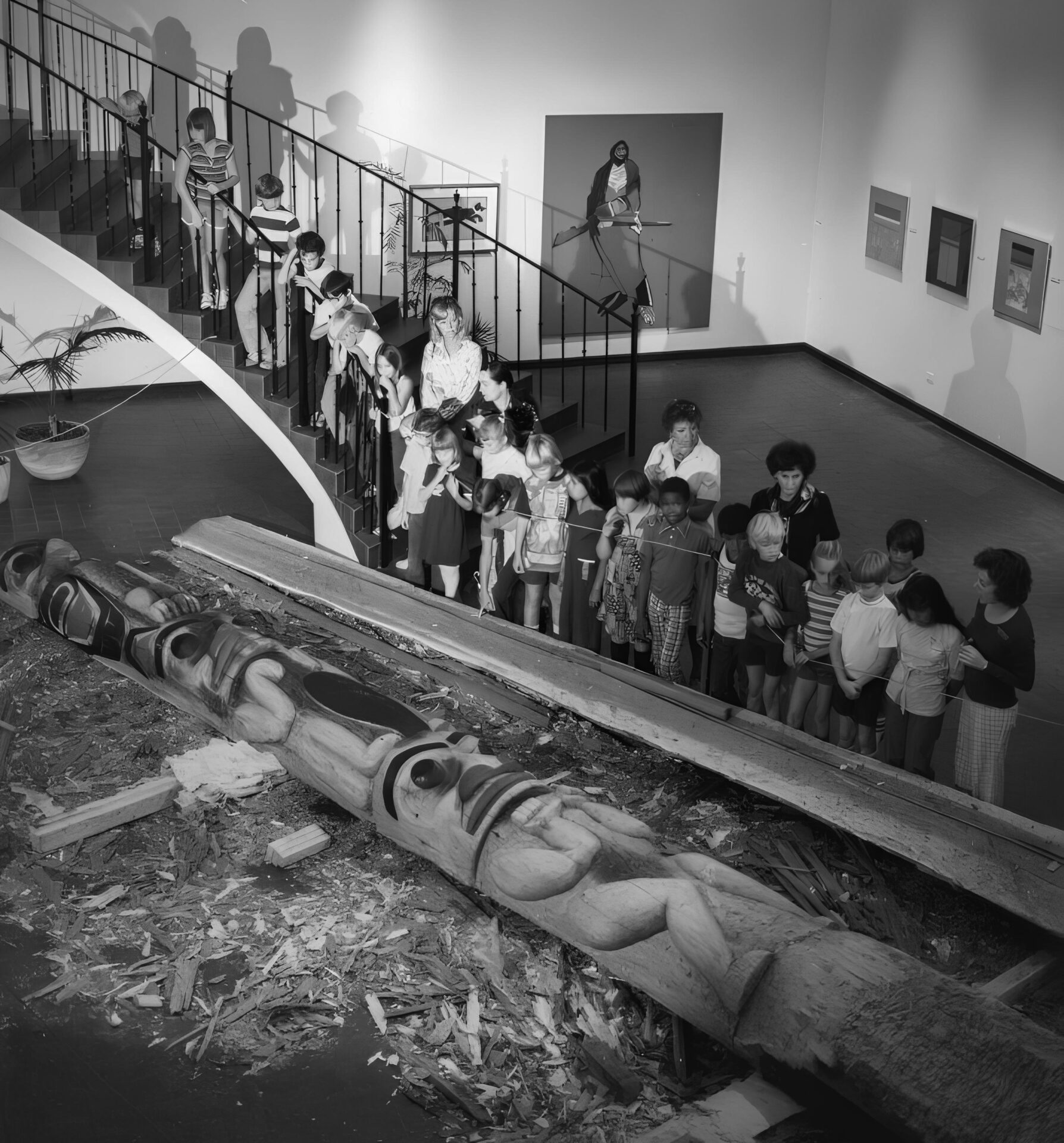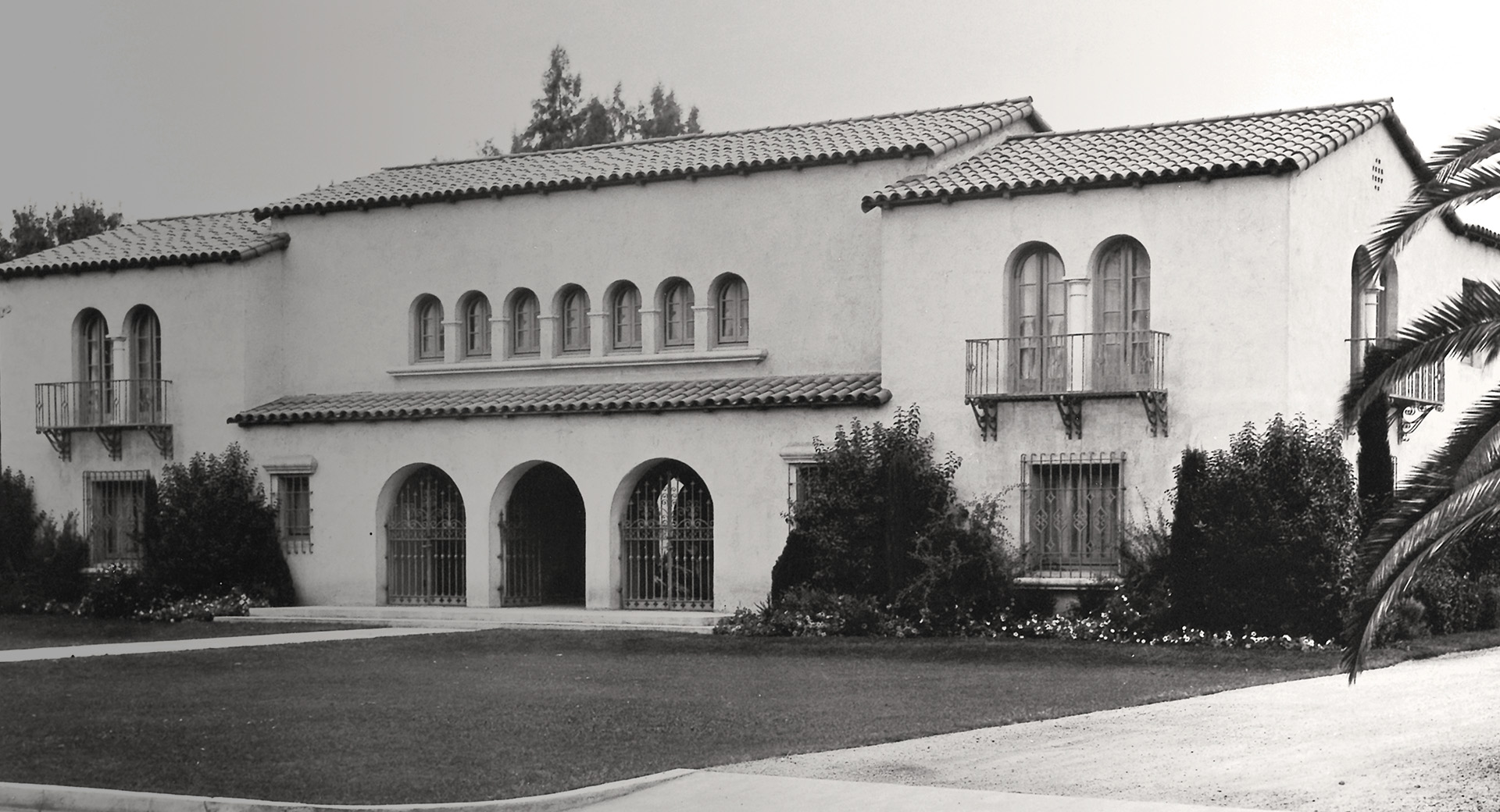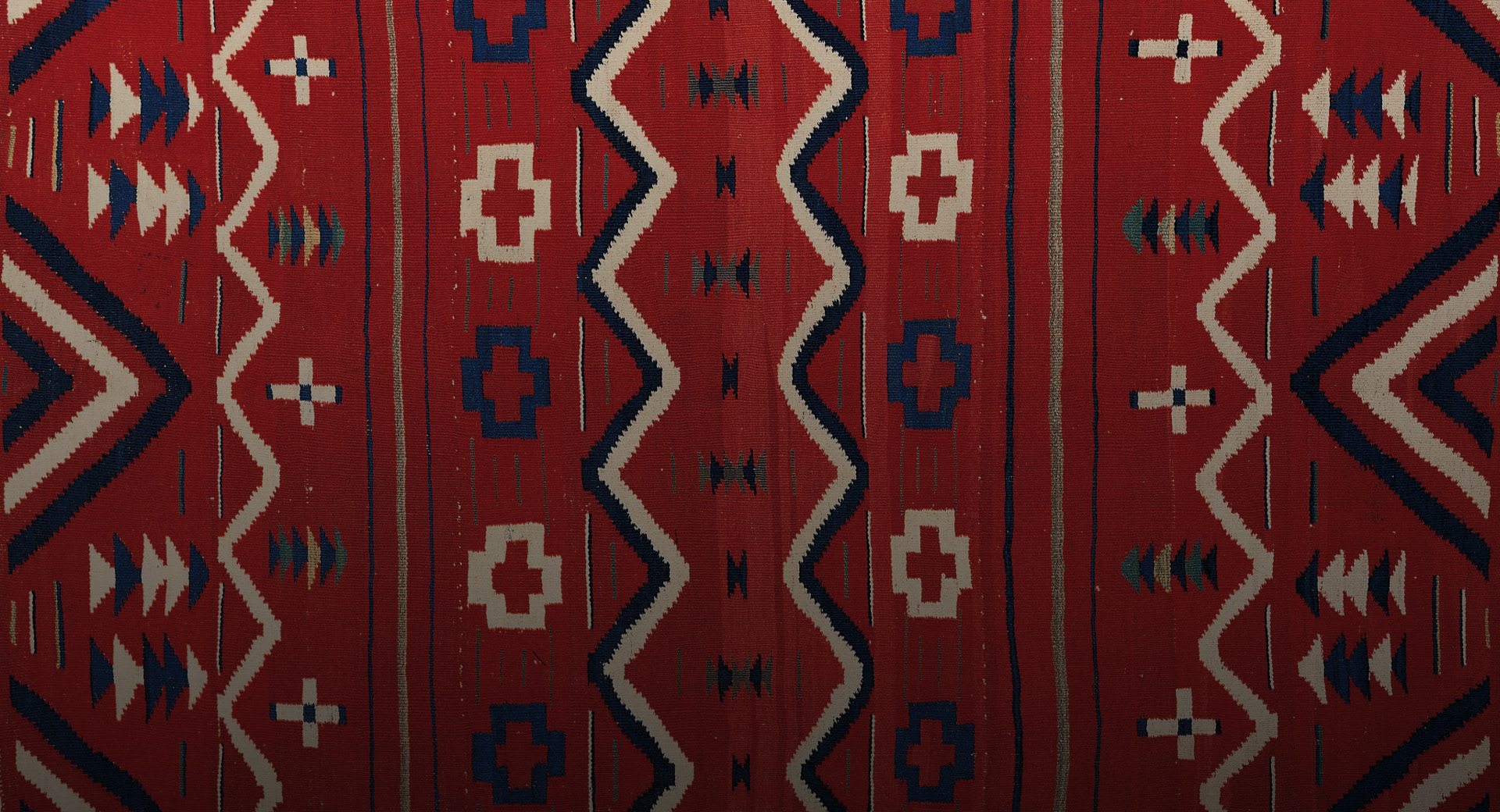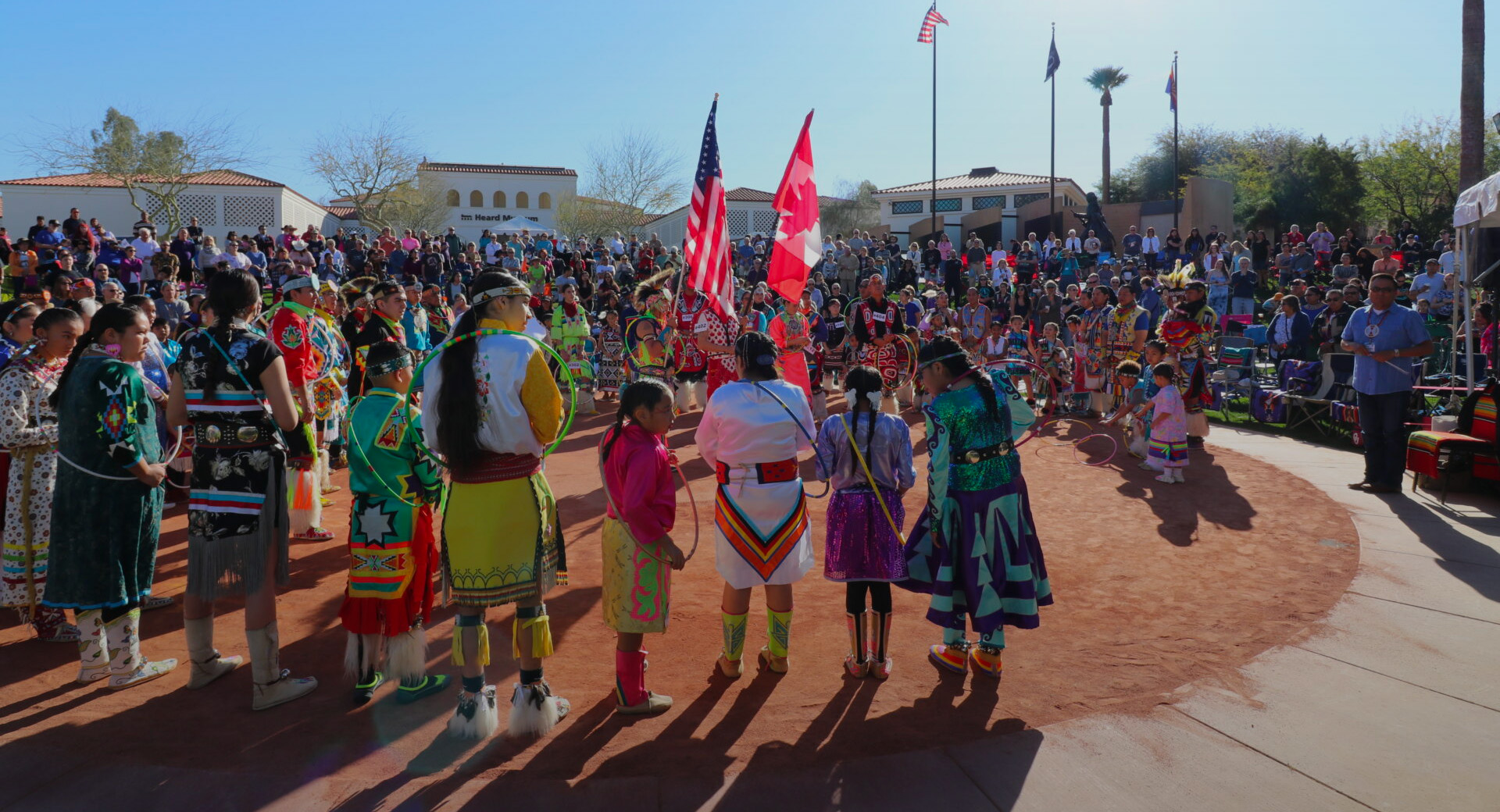Velma Kee Craig, Assistant Curator
“When a totem pole is raised, it is like the birth of an important person. The pole is given a name and treated with the same kind of respect you would give a chief. Like the elders, each pole is a teacher, a storyteller.”
—Norman Tait, Nisga’a artist, in Carving a Totem Pole by Vickie Jensen, 1994

Referred to as “The Friendship Totem” by Grace McCarthy, then the provincial minister of British Columbia, the 21-foot totem pole was carved in 1976 by Nisga’a artist Norman Tait. Tait, who has been credited with reviving the art of Nisga’a totem pole carving, was commissioned by the provincial government of British Columbia to carve the totem pole as a gift to the City of Phoenix, which, shortly after its completion, gifted it to the Heard Museum.
Norman Tait’s grandfather, Chief Alfred Watson Mountain (Sganism Sim’oogit), was a leader of the Nisga’a First Nation. His father was a carver who passed on his wood carving knowledge and skills to his son. However, at the time Tait began carving, no Nisga’a master carvers were alive to pass along knowledge specific to the carving of totem poles. Recognizing that this invaluable piece of Nisga’a tradition was in danger of disappearing, Tait made the decision to dedicate himself to learning the skills and techniques required to resurrect this part of his people’s heritage. Tait began to visit museums to educate himself on the history of Nisga’a totem poles and to view the works of his ancestors.
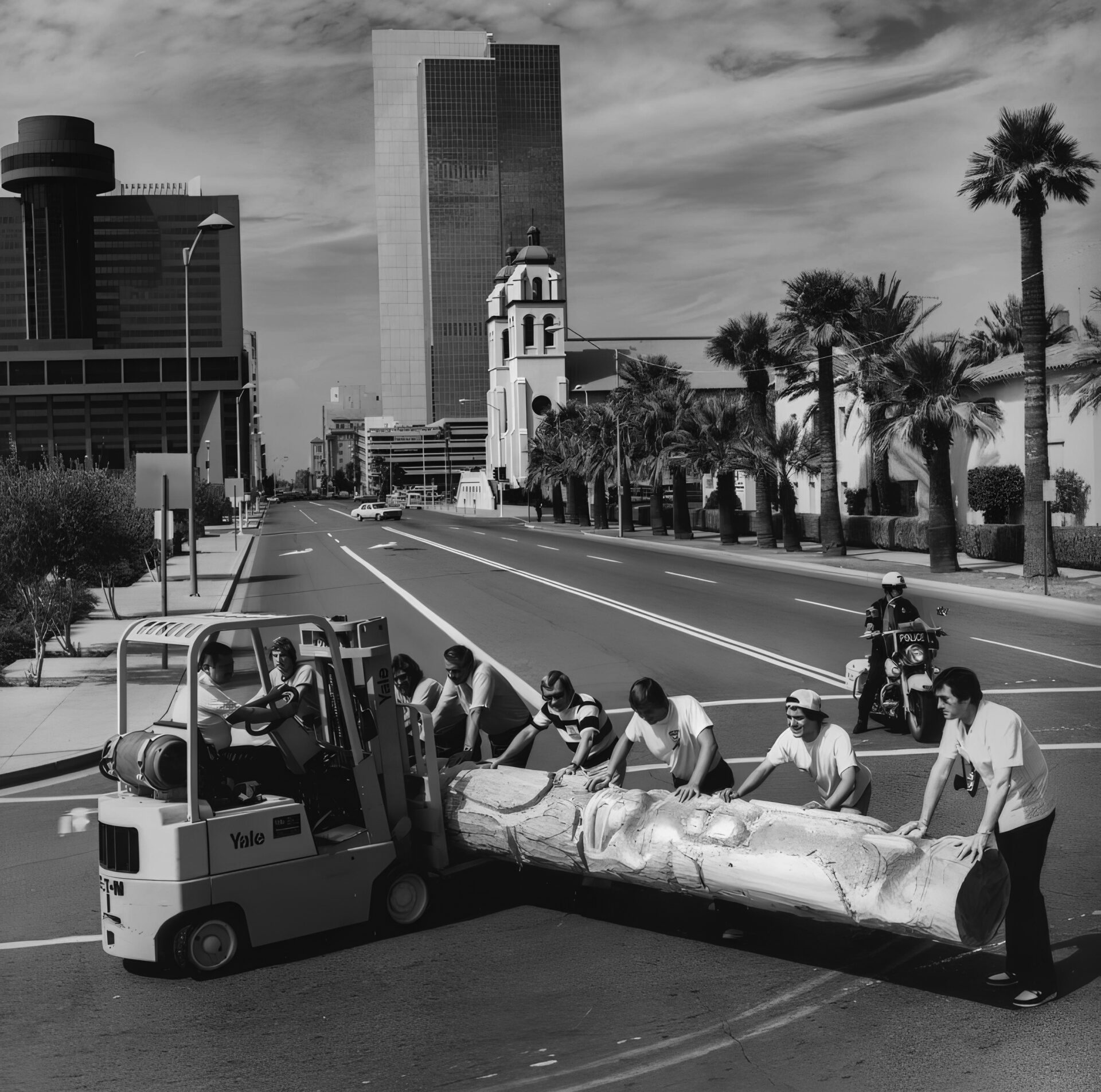
In October 1976, British Columbia sent Tait to Phoenix to represent the province for the annual conference of the American Society of Association Executives. A 26-foot red cedar log was also shipped to Phoenix from Vancouver. Throughout the weeklong conference, Tait worked in the lobby of the Hyatt Regency, adzing and shaping the log into rough forms that would eventually become elegant depictions of an eagle at the top, a beaver in the middle, and a human figure at the base. The eagle is the symbol of Tait’s clan, the beaver is one of his clan’s crests, and the human represents membership to his clan. The word totem comes from the Algonquian word odoodem, meaning “his kinship group.”
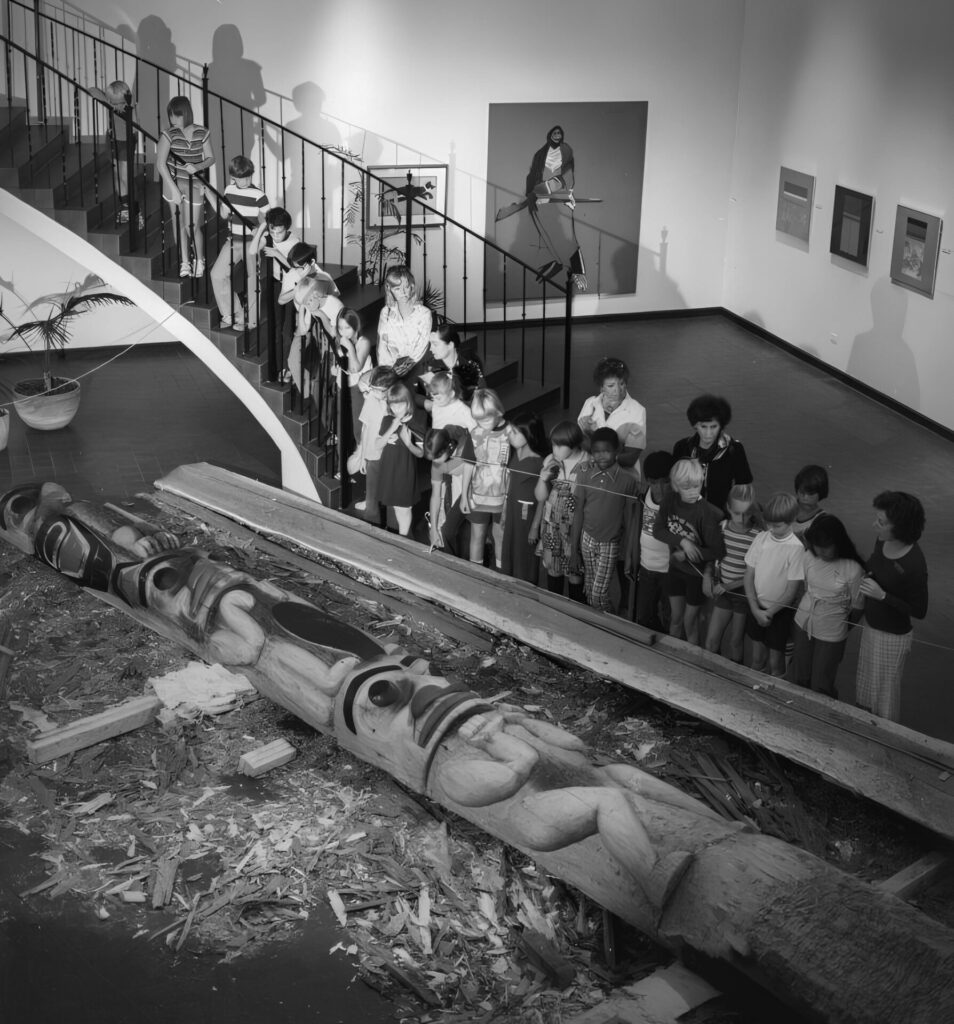
At the end of the conference, the unfinished pole was relocated to the Heard Museum’s Jacobson Gallery (formerly named the Gallery of Indian Art), where Tait would continue the carving. While at the Heard, Tait continued to work on the totem pole for 12 days. At both locations, the public was invited to visit and watch the carving in progress, allowing museum staff and visitors, including groups of schoolchildren, to observe the creation of this magnificent structure. When completed, the totem pole was raised outdoors in the Hearst Foundation Children’s Courtyard, with Tait and other guests from British Columbia present. For nearly 20 years, the Friendship Totem remained on display in the same place that Tait had originally approved. In 1999, the Heard Museum underwent a large expansion project that included the addition of new galleries. At that time, the pole was placed in the waterproof covering and stored in an exterior space where it was protected from direct sunlight.
Now, nearly 25 years later, Bank of America is generously funding the restoration and reinstallation of the totem pole. Ron Harvey of Tuckerbrook Conservation in Lincolnville, Maine, who travels annually to the Heard Museum to clean and care for the sculptures on display in the outdoor sculpture gardens, will lead the conservation of the totem pole, in close collaboration with Norman Tait’s surviving brother, Alver Tait, and Norman’s daughter, Valerie Tait. Alver was among the artists Norman trained in pole carving. As a hereditary chief of the Eagle-Beaver clan, he serves as an ambassador for the Nisga’a. A recognized master carver in his own right, Alver has committed to contribute his knowledge to the project, which includes traveling to Phoenix to consult with Harvey and supervise the raising ceremony as the final act of the restoration project. Traditionally, hundreds of community members gathered to raise a totem pole using ropes and pulleys.
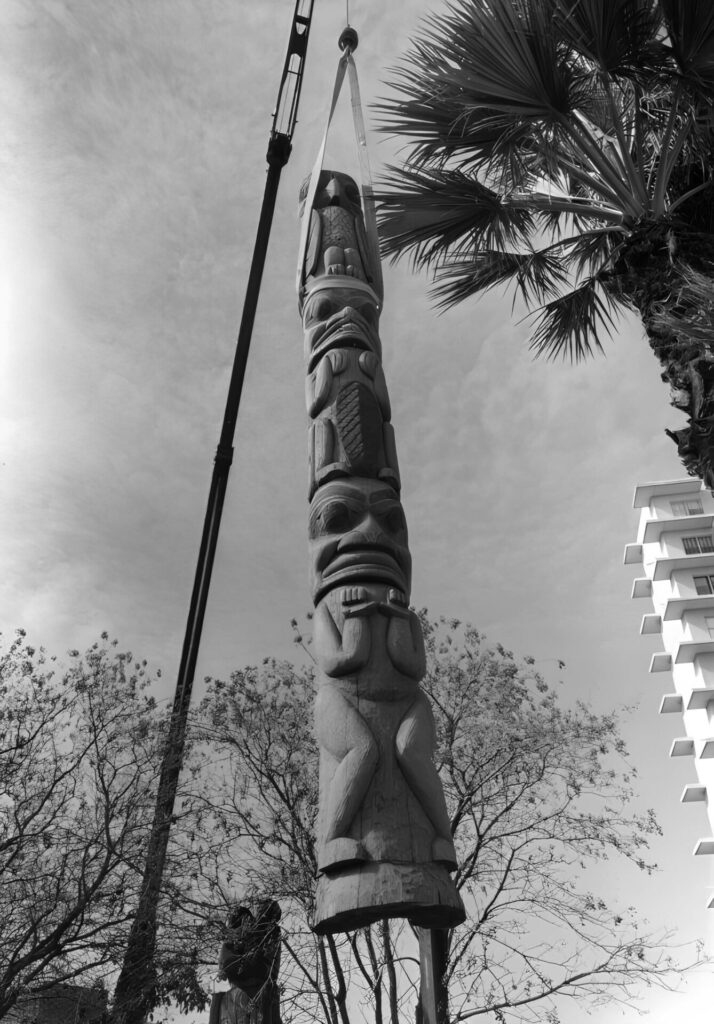
Harvey, in consultation with Alver and Valerie Tait, first will complete an assessment of the Friendship Totem, studying its current condition to understand the techniques and materials Norman Tait used when he carved the pole in 1976. The preparation and cleaning will stabilize the condition of the wood and the paint, and it also will reveal the pole’s original colors.
The totem will require a central support. A 20-foot stainless steel rod will form the pole’s “spine,” bolted to a mount to keep the pole from moving in heavy winds. To keep rainwater from entering through the top of the totem and seeping into the interior, causing wood rot, Harvey may create a metal cap. He will apply bonding agents and adhesives to repair existing splinters and cracks, and he and the Taits will determine if the paint requires restoration. If there are areas of loss that need to be replaced, Alver Tait will carve the replacement for Harvey to attach to the totem.
After the Friendship Totem has been restored, it will be reinstalled in the Hearst Foundation’s Children’s Courtyard, where it will once again adorn the Children’s Garden and welcome school tours and visitors. This location is the optimal choice for public and student engagement—the Children’s Courtyard is the starting point for school tours, so the pole will be one of the first artworks that 10,000+ children annually will see when they arrive at the Heard Museum.
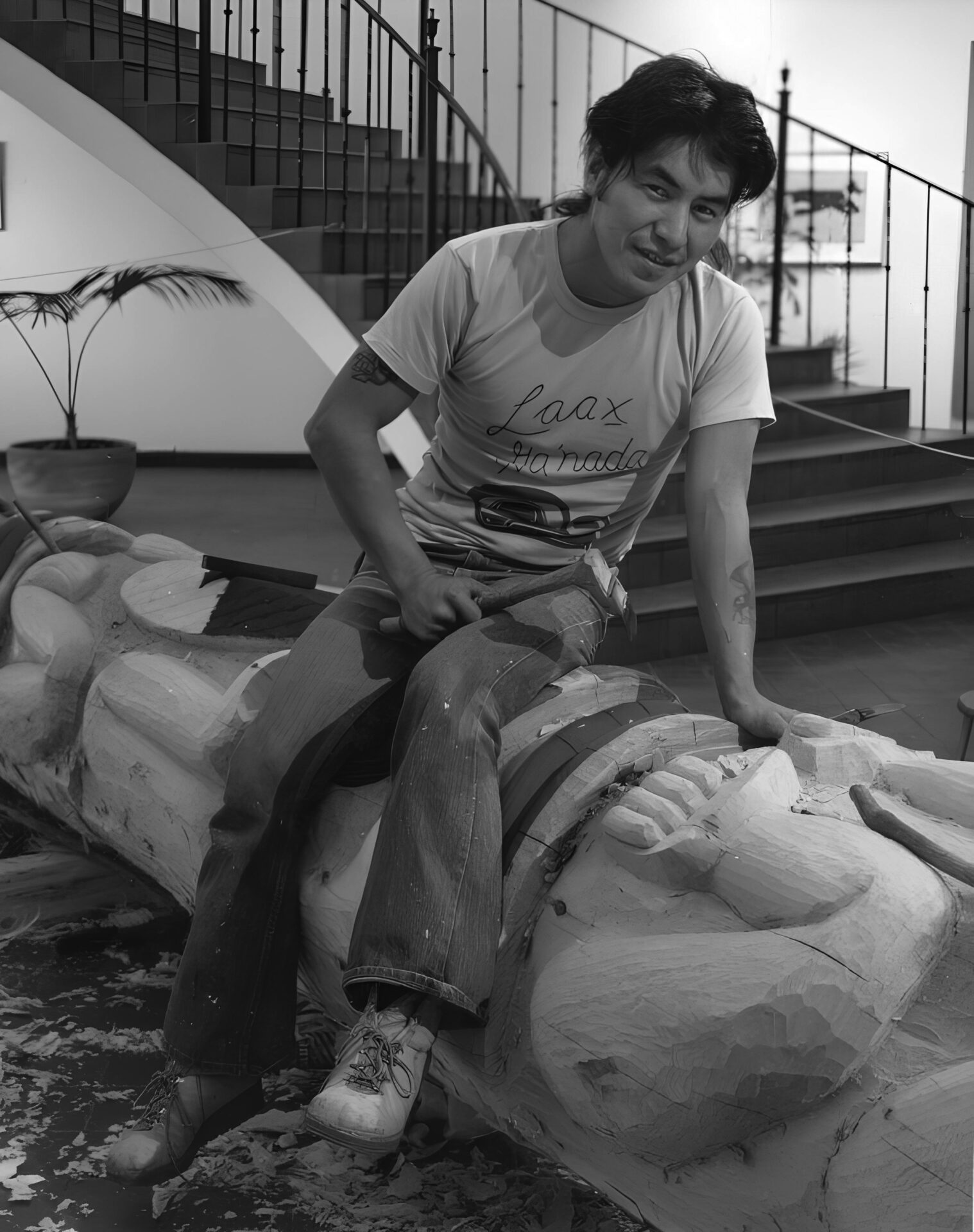
In the past, many kinds of totem poles were carved for a variety of purposes—in memory of a chief’s death, as massive beams to support the structure of a house, and as giant figures erected to welcome visitors. Male and female chiefs commissioned totem poles to tell the mythic stories of their families and included the family’s crests, or spiritual ancestors. The Norman Tait Friendship Pole has been part of the Heard Museum collection for 47 years. It is a symbol not only of friendship between cities and nations, but also of the survival and resilience of American Indian cultures. After a quarter of a century in storage, patiently awaiting its time to resurface, the Friendship Totem once again will occupy a place of prominence on the museum campus.
